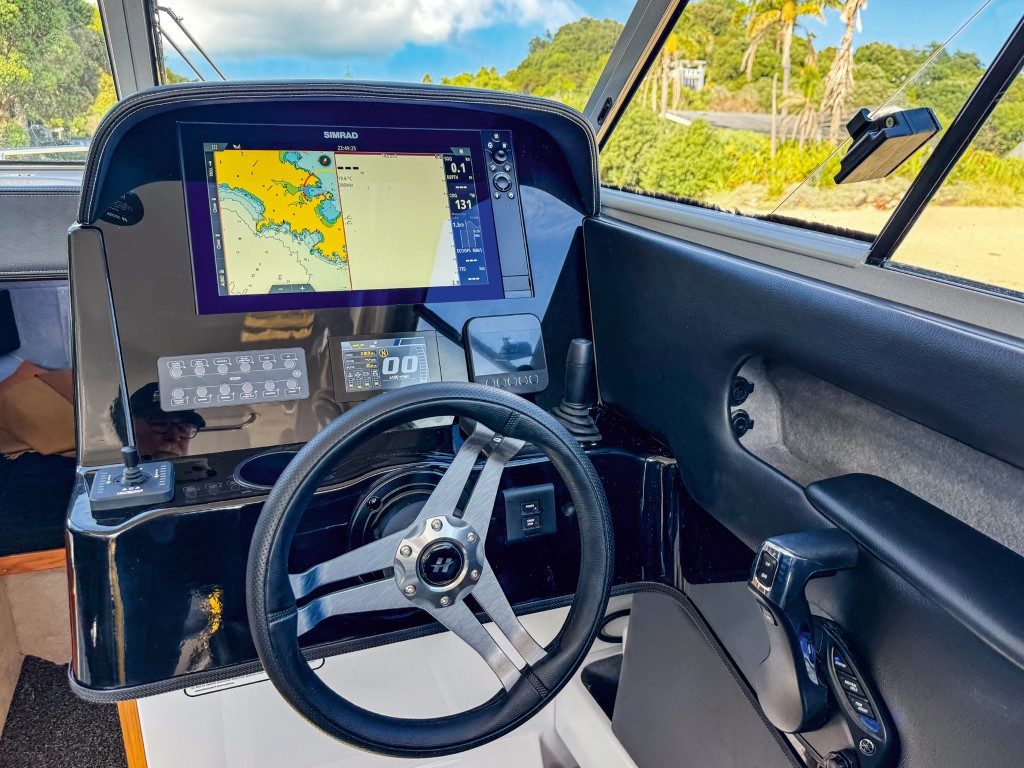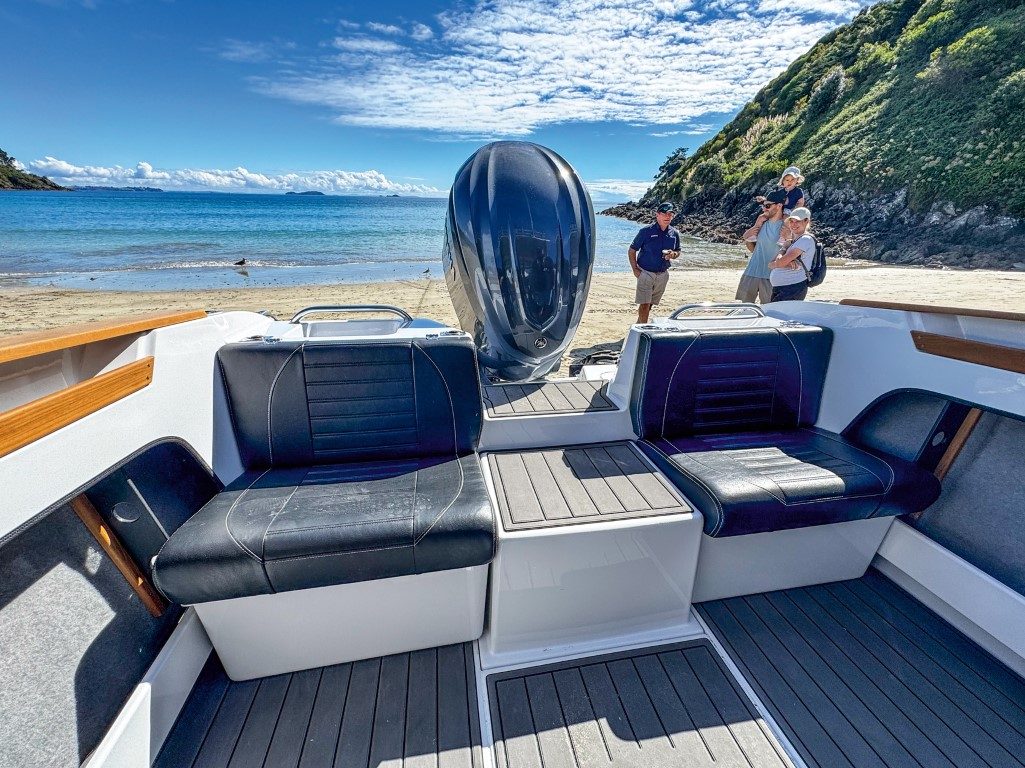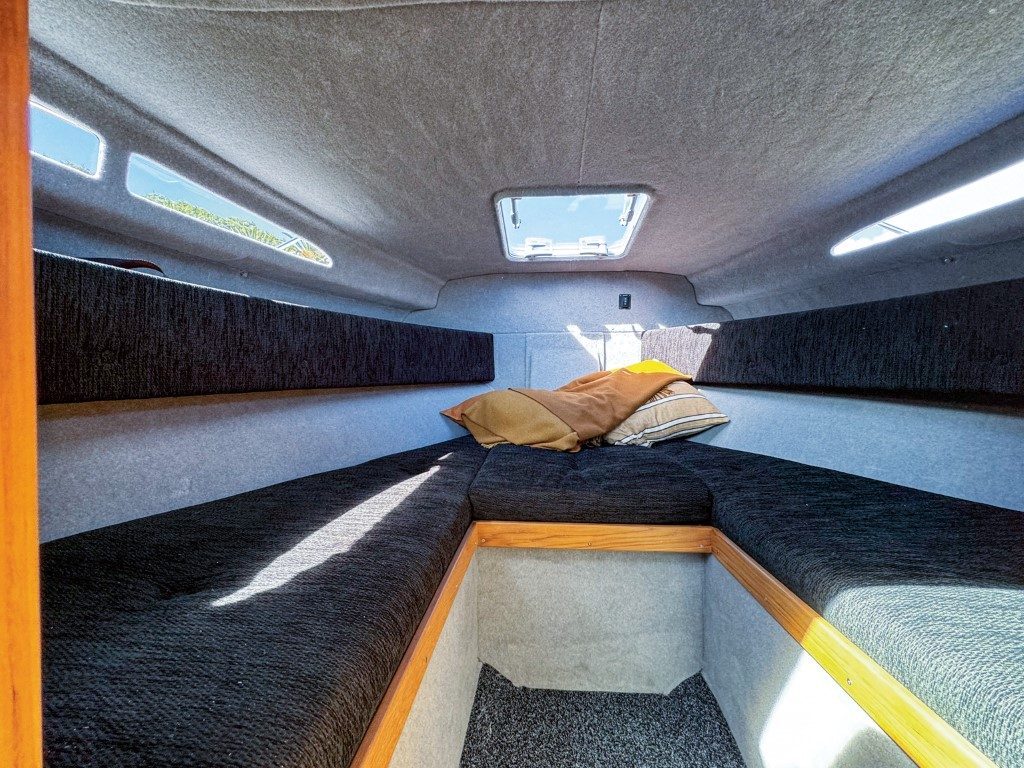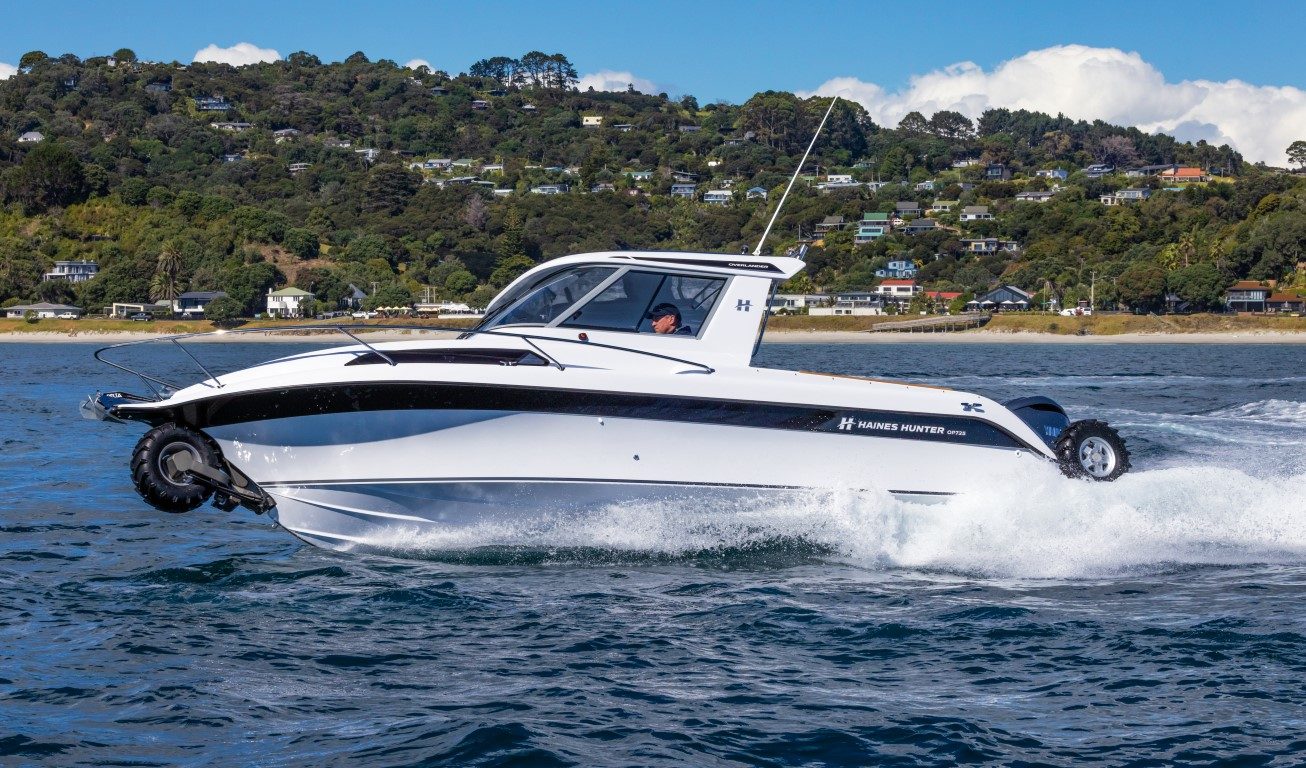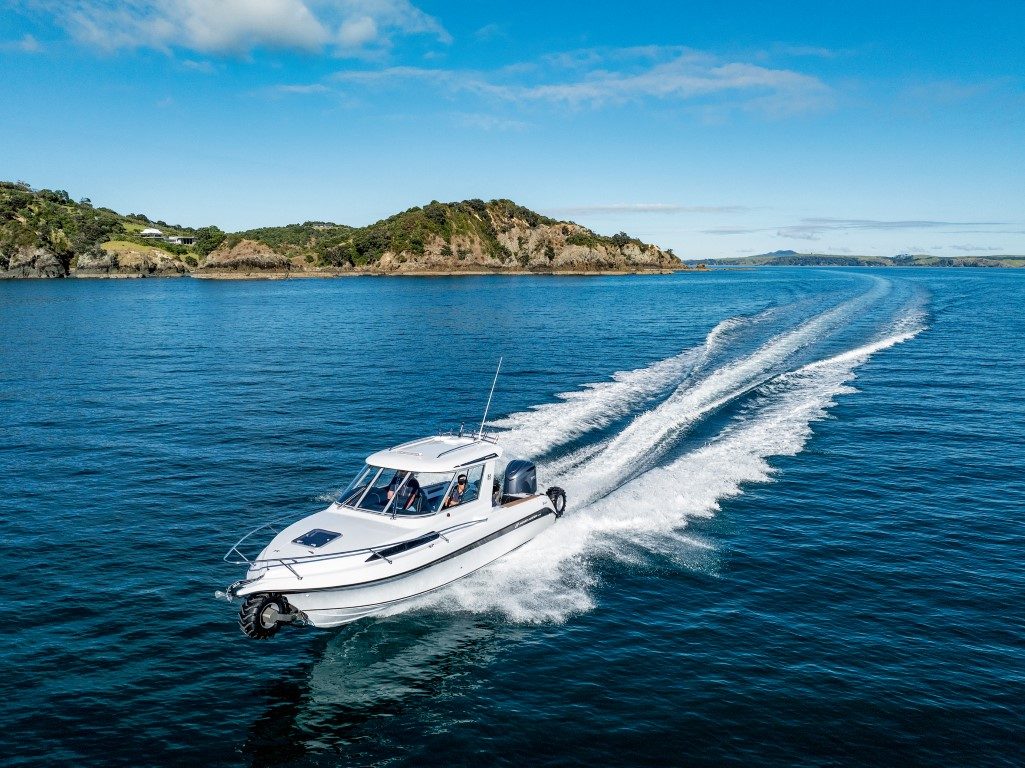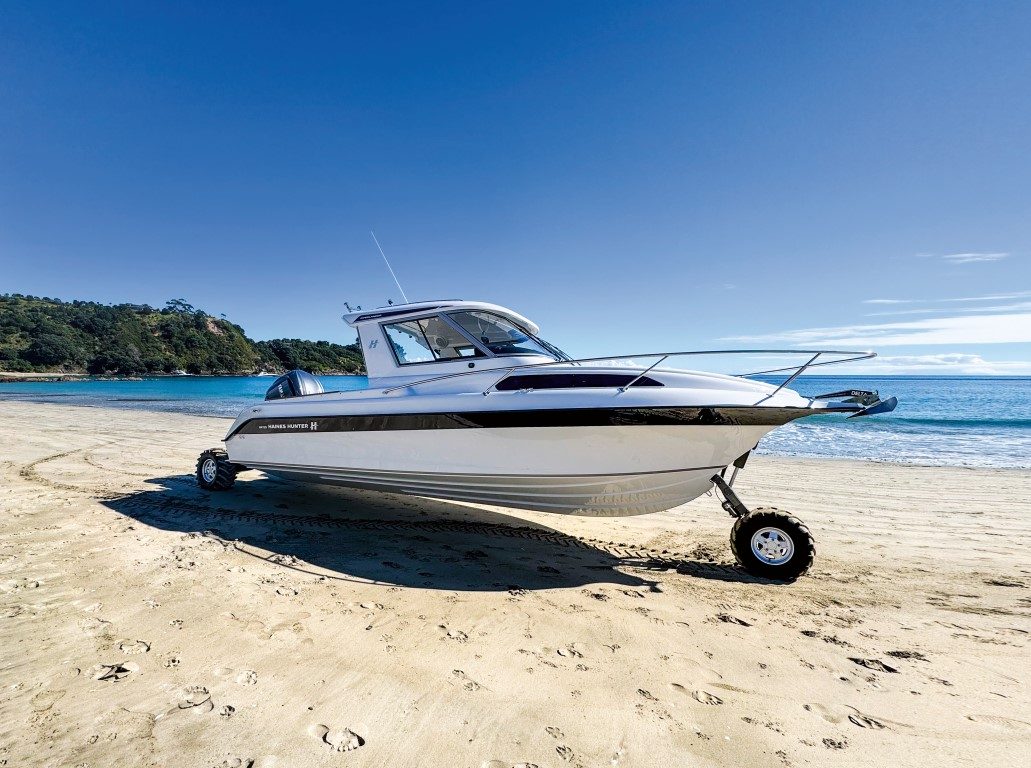‘Behemoth’ is a word which springs to mind or, perhaps more nautically, ‘leviathan’.
- High-quality finish and fitout, well engineered amphibious integration
- High-quality Anura hardware
- Quiet, easy to use amphibious operation
- Dry, comfortable ride, with excellent on-water performance
- Good performance on land



